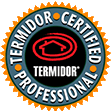It is during fall or spring, and you spot a large ant crawling around; the chances are that it the wood-destroying carpenter ant. If you notice that it has wings, this confirms that you have carpenter ant infestation.
Carpenter ants are some of the common types of ants in the United States of America. They are also the largest known ants. Nevertheless, their sizes differ even when found in one colony. Carpenter ants share many similarities in terms of color than their sizes – with the majority being black or brown.
Read on to learn how to identify and control carpenter ants.
Carpenter Ant Control
If you want to control carpenter ants from your home, you must know how to identify and differentiate them from other ants types and pests.
The sight of a winged ant in your house is the most surefire sign that your home is infested with carpenter ants. While such ants often come from outside your home, once they find a suitable place for shelter, such as a decaying wooden structure in your house, they settle and start reproducing.
If you see the ant flying around your home, especially in wooden and moist areas, it shouldn’t worry you much. Nevertheless, it is essential to take the necessary precautions to ensure that the ants do not find their way into your home.
Carpenter Ants Control
Whereas the control of carpenter ants starts with the correct identification, it is necessary to be aware of the appropriate ways to keep these destructive pests away from your home.
Here’s a list of the most common ants control methods:
1. Chemical Method
The chemical method of controlling ants involves the use of pesticides. This method is useful when the ants are found in an outdoor nest. You can apply the treatment around the nest to kill all the ants in the colony. Most of these pesticides are harmful to the environment, so you should make sure to follow the provided guidelines, or better still, call an ant control specialist.
2. Bait the Ants
The baits method is most preferred when you suspect that the ants have many nests around your home or you can’t identify the nests.
Carpenter ants, unlike termites, do not eat wood; they create tunnels and nests in them. If you place the baits in areas where they pass, the ants will take it to the entire colony. Alternatively, you can dredge or spray outdoor nests with an insecticide.
3. Non-Chemical Method
Keeping ants away from your home includes ensuring that there is no conducive environment for them. Throw away any damaged woods that can be used as a shelter for these destructive pests. Keeping your house moisture-free is another suitable non-chemical way to keep carpenter ants away.
Conclusion
Controlling carpenter ants doesn’t have to be so challenging, primarily if you identify them well and know the appropriate control methods. However, with the ants’ control methods differing in application and efficiency, you might need to engage a professional to guide you appropriately. Get in touch with an expert in carpenter ants control and prevention to help you keep these pests away from your house.







